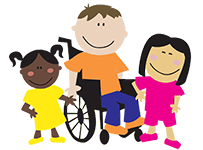Tips for Managing Stuttering in Preschoolers: Creating a Positive Environment

Stuttering doesn’t look the same from individual to individual. Some repeat sounds and syllables, others prolong sounds, and still, others interject their own sentences with filler words and noises, such as ‘um’ or ‘like’. Just as there are different ways a stutter can sound, there are different categories for stutters to fall into. Developmental stuttering, the most commonly diagnosed, often happens to children between the ages of 2 and 5 when their words are lagging behind their thoughts. Neurogenic Stuttering Neurogenic stuttering is directly correlated to a brain injury that involves significant issues between the nerves and muscles of speech. Psychogenic stuttering is uncommon but usually associated with an emotional trauma or an issue with thinking and reasoning. Each of these categories requires its own line of diagnosis and specialized treatment plan to prevent the stuttering from occurring, but there is no cure for stuttering. Developmental Stuttering Thinking on developmen
